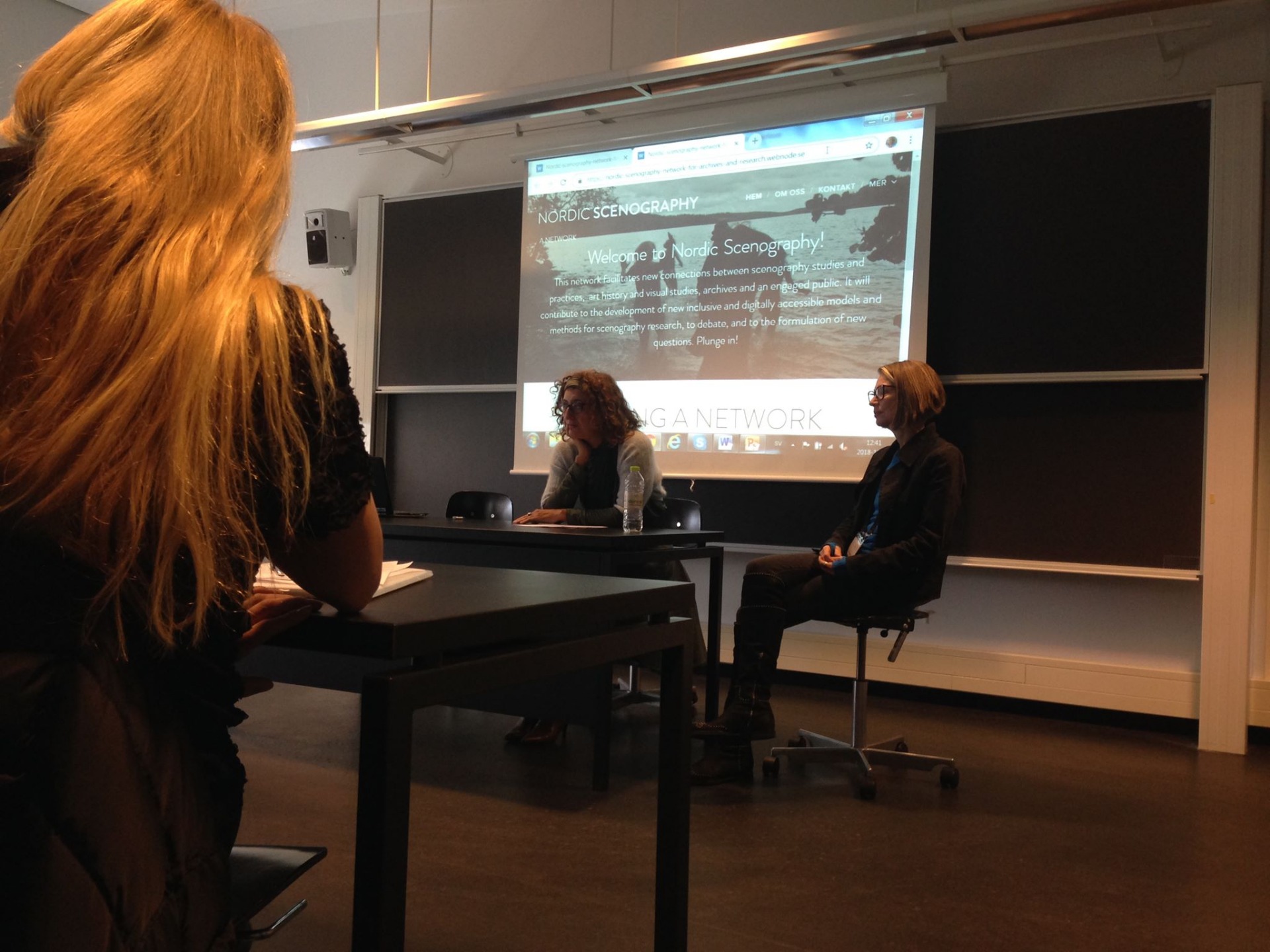NORDIK XII - Scenography at Copenhagen Art History conference. Day 1.
Introduction: Scenographic thinking, memory and the multisensory
Astrid von Rosen & Viveka Kjellmer
Warmly welcome! With this session - ongoing all three conference days - on scenography and art history we would like to start the discussion and create opportunities for a critical and constructive re-imagining of the contact zones and crossroads linking art history and scenography. How can scenography, as a way of thinking, acting, and creating, be used as a critical tool for exploring art and visual culture and understanding them in a digital age? We really look forward to explore this together with you today and during the following days.
Talk 1: "It's Showtime, Folks!" Juxtaposing Scenography and Nordic Art History by way of Recent Theory and Multisensorial Research Examples
Viveka Kjellmer & Astrid von Rosen
"It's showtime, folks!" is a quote from Bob Fosse's film All that Jazz (1979). Here we draw on the quote to open up a visual, multisensorial and kinesthetic space of both magic and critical potential that can be termed scenographic. First, we introduce the most recent theoretical understandings of the concept of scenography in particular focusing on the ways it has expanded in recent years and how this produces new approaches and questions (McKinney and Palmer 2017). What does it for example mean to art history that scenography has expanded beyond traditional theatrical settings to potentially include all environments? In what ways can it be useful for art historians to think with the idea that every day and night "we perform scenographies and they perform us" in a co-creative exchange (Lotker and Richard Gough, 2013)?
In the second section of our presentation we will test to the limit the concept of expanded scenography by way of live demonstrations from our own recent research. We use various applications of scenography to address complex multisensorial features in the realms of dance archives and olfactory environments. We will ask you to participate in some co-creative activities, but it is of course voluntary to actively partake (people allergic to perfume might wish to be careful). The aim, then, is to explore how scenography can help unravel and critically address often hidden yet powerful processes of meaning making in areas as diverse as dance in public spaces and scent exhibitions.
Viveka sprays a stinking rich combination of semen, sweat, blood and saliva on small pieces of paper. The attendants reach out, sniff, whisper and laugh, and the rather ascetic workshop space transforms into a multisensorial module for exploring research into critical costume. Scent is an amorphous costume that crafts human and non-human actors in a dance moving far beyond traditional art history.
Dr Astrid von Rosen is Associate professor in Art History and Visual Studies, University of Gothenburg, Sweden, and a former dancer. Her research interests include activist approaches to scenography and dance archives in our digital age. Together with Kjellmer von Rosen is building a Nordic Scenography network.
Dr Viveka Kjellmer is Senior lecturer in Art History and Visual Studies, University of Gothenburg, Sweden. She also holds a degree in economics and has previously worked in marketing. Her current research concerns costume, body and identity, as well as the relations between olfaction, architecture, and space.

Talk 2: Memory Routes: People's voices, Migration
and Intangible heritage
Alda Terracciano
In this paper I will use the concept of scenography as a critical tool to discuss a heritage and digital arts project designed to engage with new ways of sharing knowledge on the intangible heritage of migration in Europe. Following McKinney and Palmer (2017) expansion of the concept, I will discuss a research practice framed along the lines of Harrison, Sengers and Tatar's Third Paradigm HCI (2017) and Haraway's standpoint epistemology (1988).
I will do this by analysing the design of the first iteration of the project in London, which focused on the living heritage of members of local Moroccan communities shared through the artwork Zelige Door on Golborne Road. I will then propose the application of my methodological approach to a new iteration of the project focusing of the history of Sillgatan in Gothenburg, renamed as Postgatan in 1895. Research has demonstrated how Sillgatan held a key infrastructural role in the great emigration from Sweden to North America from the mid 1800s to the early 1920s. It was this street that led nearly 1.2 millions of Swedish emigrants from Gothenburg's train station to the customs house at Packhusplatsen and so, from a historical point of view, the street played a key role in the flourishing and profitable emigrant industry that developed at the time.
Referencing practises connected to participatory action research, archival activism and digital interaction design, the history of the place will come alive through the stories of Swedish emigrants re-activated by today's immigrants to Sweden. In so doing the scenography of the place will offer itself to a form of polyphonic engagement with its aesthetics, urban development and sociological settings in ways that aim to point to new directions in historiographical research practices.
Alda Terracciano is Honorary Research Associate at University College London and co-leader for the Centre of Critical Heritage Studies at University of Gothenburg. In 2016 she researched on digital economy at Queen Mary, University of London and was curator of the installation London's Digital Ecologies of Collaboration.